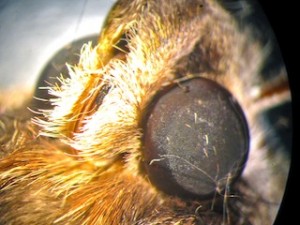
In this article from Fierce Health IT, a group of researchers has been using moth eyes as a model to developed nanoscale materials to improve the light-capturing efficiency of medical imaging devices.
Moths have large compound eyes that reflect very little light, helping them to evade predators in the dark. Previous researchers have used moth eyes to design solar panel coatings and anti-reflective surfaces for military devices.
This group of researchers, however, focuses on using moth eyes as a model for materials used to convert X-rays leaving the body into visible light during medical imaging.
You can read the whole article here.